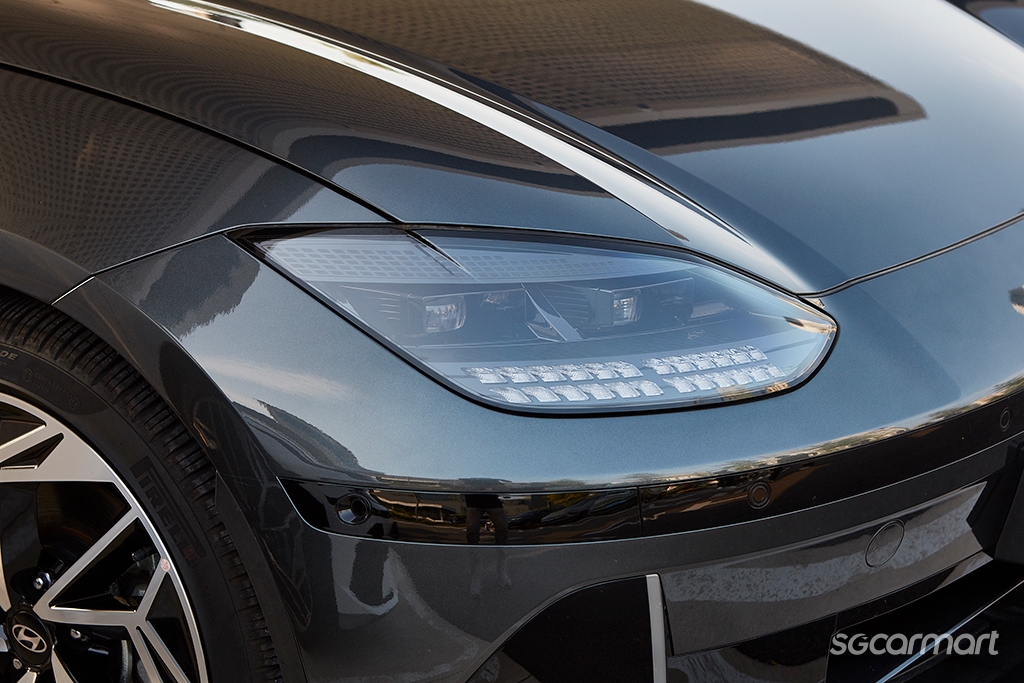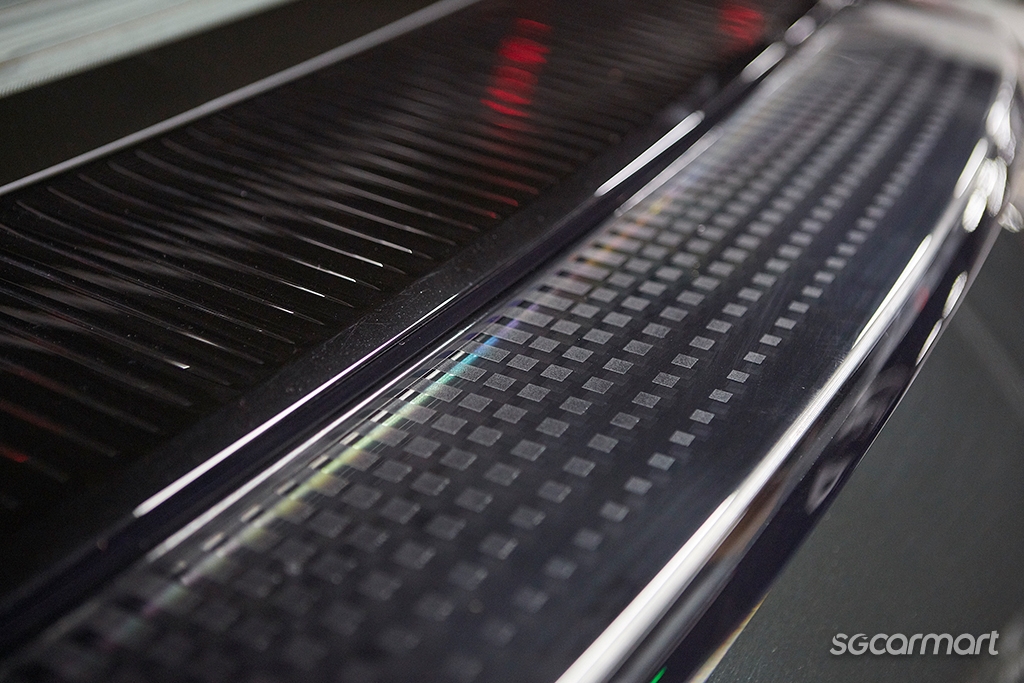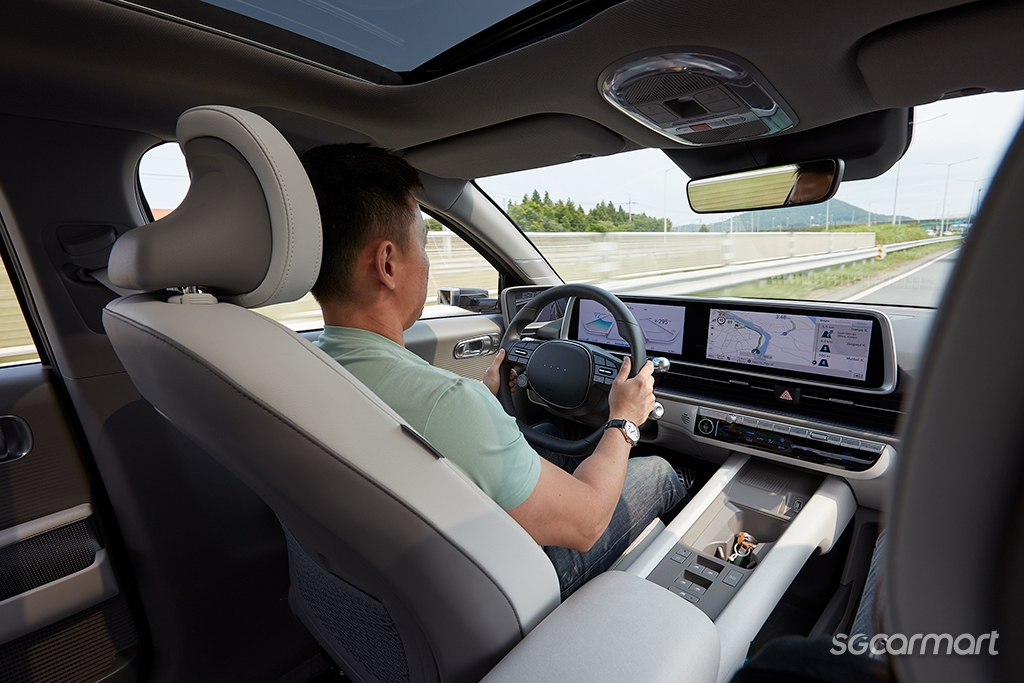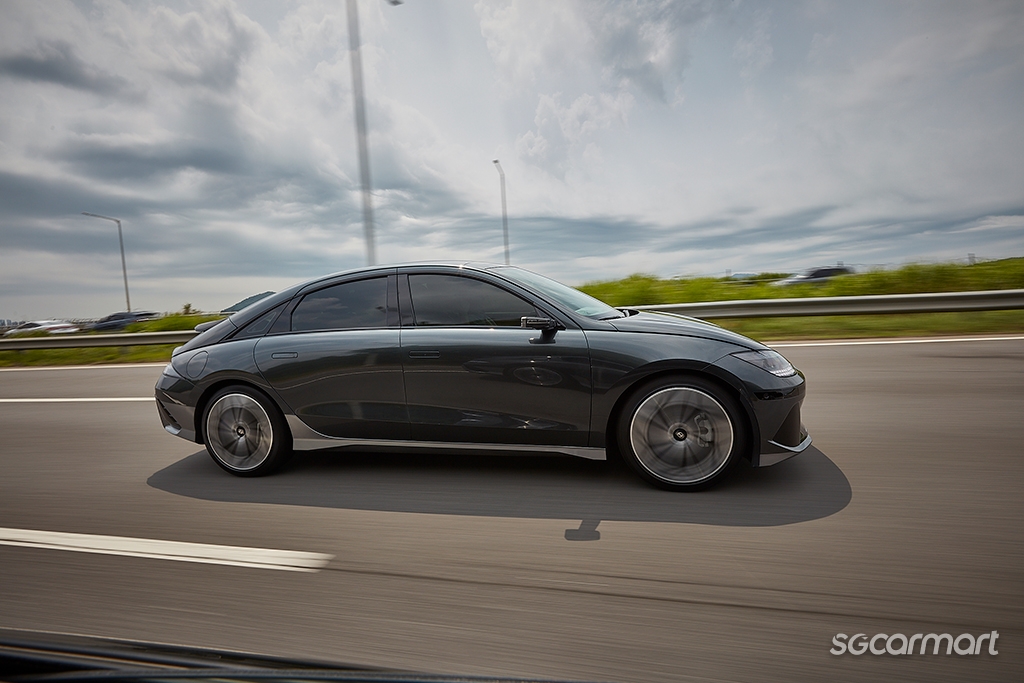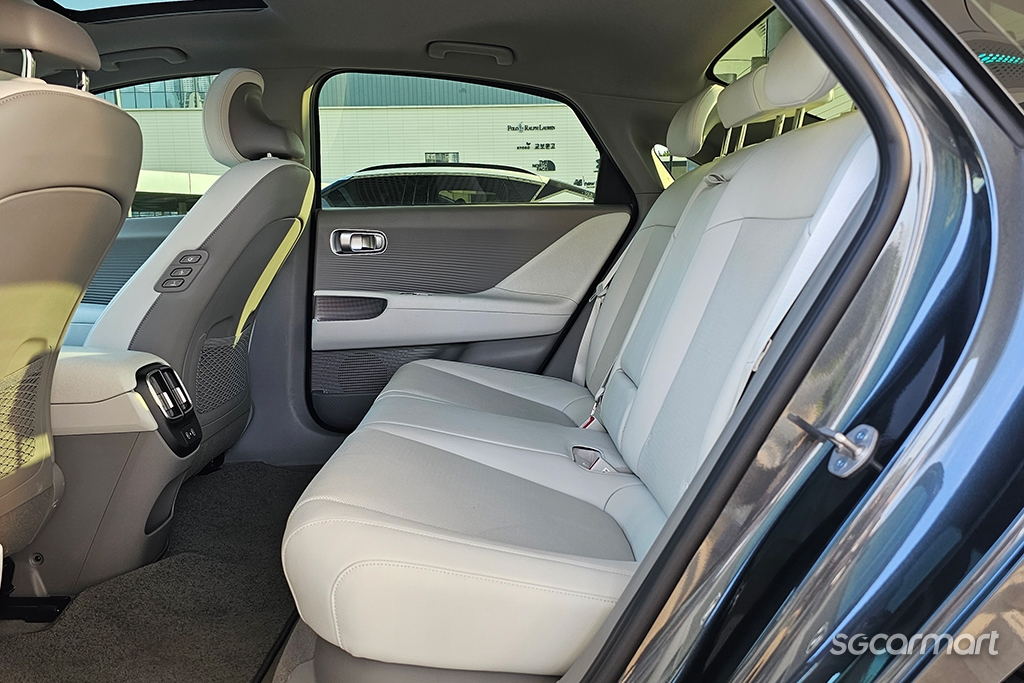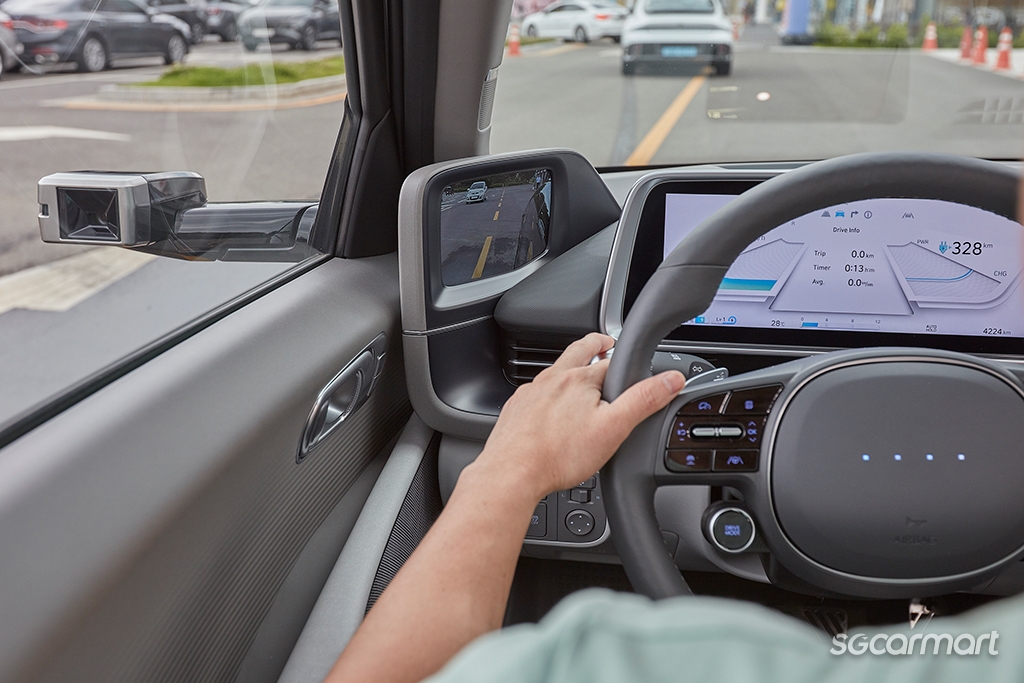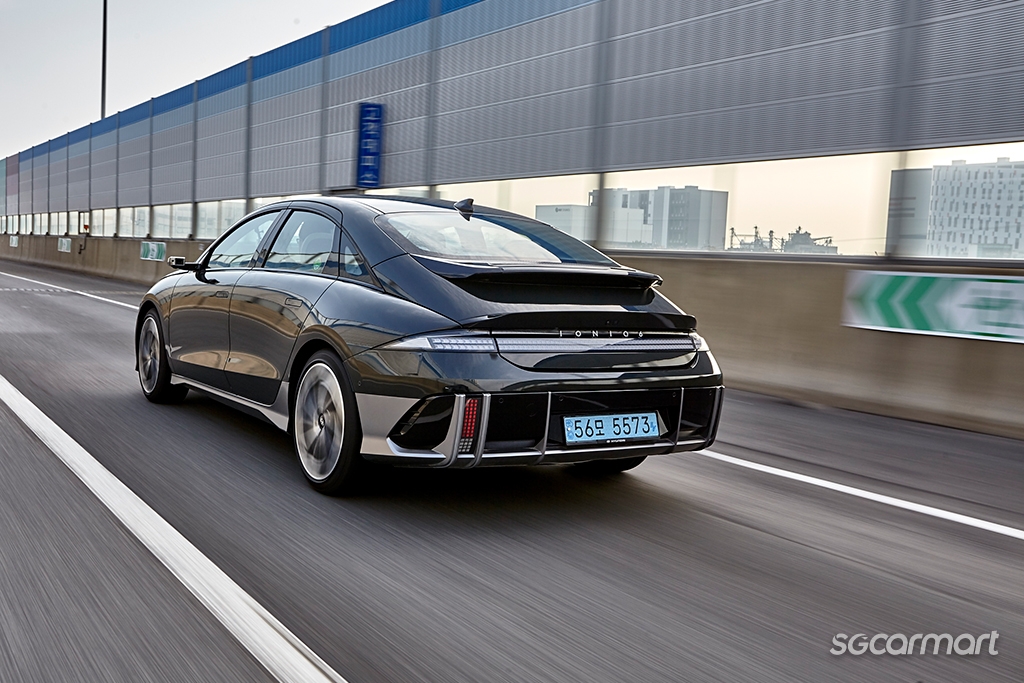Hyundai Ioniq 6 77kWh First Drive Review
29 Jun 2023|17,311 views
What We Like
That retro look!
The interior is very clean and zen-like
Ample power from the dual-motor
More than sufficient legroom
What We Dislike
Headroom is restrained by the sloping roofline
It's going to be a Cat B COE car.
Truth be told, I am not surprised by how good the Hyundai Ioniq 6 electric vehicle (EV) is. It's almost like I expected it, considering the Hyundai Ioniq 5 - a full-electric SUV that shares the same E-GMP platform as the 6 - was impressive on all fronts.
Of course, the two cars are largely different, not just in terms of size and space, but also in the way they drive. And that's exactly where the Ioniq 6 outshines its SUV sibling.
On the go, the car exhibits a sharper and stiffer experience aided by a very keen and precise steering wheel. There is a slight lack of feedback around long and winding roads here in Seoul, but it never dulls the fun in being at the helm. The low centre of gravity allows it to be planted at all times, while paddle shifters allow you to choose the different levels of regenerative braking on the fly, which makes it a tad easier to brake really late into the corners once you get used to it.
But more importantly, the ample fun is also because power - lots of it - is readily useable at every prod of your right foot.
The Ioniq 6 comes with the same 77kWh battery pack as the 5, but it has two different variants - an all-wheel driven 320bhp dual-motor and a rear-wheel powered 225bhp single motor. The car that was tested was the former and it's plenty prompt for my palette.
The car will cross the 100km/h mark in just 5.1 seconds from zero (compared to the 7.3 seconds in the 225bhp rear-wheel variant), and it does so in such a smooth and quiet fashion that it is very easy to go above speed limits without you realising it. And that's also because the Ioniq 6 was designed with aero efficiency in mind (as with all EVs), which affords it a drag coefficient of just 0.21 - almost on par with the Mercedes-Benz EQS' 0.20Cd, a car claimed to be the most aerodynamic in the market today.
Needless to say, this slippery silhouette endows the Hyundai EV with an impressive range of 519km on paper, although it's more likely that regular drivers like you and I will manage about 415km as I've experienced. Still, the range on a full charge is nothing short of impressive, even with that 20% deficit from suggested figures.
That said, it isn't all about efficiency when it comes to design. According to a spokesperson from Hyundai, the Ioniq 6 is anything but dull. And he's quite right, at least to this pint-sized writer's eyes. From the exaggerated swooping roofline and long bonnet to the retro looking headlamps and futuristic rear end, the Hyundai is almost remarkably imaginative, proving that an aerodynamic-centric design can still be sexy and seductive from any angle.
Clearly, at close to 5m long and 2m wide, I have no issues with the way it looks, especially when you put it against cars like the BMW i4, Polestar 2 and the Tesla Model 3. Not even on the inside, which is my all new favourite place to be. Just like the Ioniq 5, the cabin is clean, crisp and commodious.
Thanks to its wheelbase of almost 3m, the Ioniq 6 will supply ample legroom for three Singaporean adults at the back. However, due to its sloping roofline, headroom is compromised a tad. Alas, the boot space is also a tad small for the car this size, standing at about 400 litres - smaller that the aforementioned premium models.
But what it lacks, it more than makes up for it with the lounge-like cabin that's impressively modern and minimalistic. For a car that doesn't belong in the premium segment, the fit and finish is astonishingly admirable. Yes, you get the usual eco materials throughout the interior, but it doesn't come across as tacky.
The recycled PET fabric seats and carpets that are made from recycled fishing nets, for instance, are premium to the touch and appealing to the eyes, while the large digital screen that combines a responsive 12.3-inch touchscreen display and a 12.3-inch digital cluster makes the whole cabin more luxurious than many of the cars in the superior segment.
The Ioniq 5 was an impressive vehicle from the South Korean carmaker, but I reckon it's this Ioniq 6 that really showcases just how ready Hyundai is to get rid of the shackles of it's budget reputation that has plagued it for so many decades.
The car that you see here on this revamped page is an opportunity, an indication, perhaps even a warning to other carmakers out there that the South Korean carmaker is fundamentally changing the perception of what kind of cars it is producing.
In recent years, Hyundai has gone from being known for making budget-friendly, high-volume value vehicles to one that produces premium, good looking and well-specced cars. Mind you, that's quite a remarkable feat. The Ioniq 6 is simply excellent in terms of design, build quality and thoughtful practicality. Thus, when the car is well and ready for Singapore, which is really soon, go take a look. The indicative price will be about $260,000 (at time of writing).
So when I say that the Hyundai Ioniq 6 did not surprise me one bit, I meant it in a really good way.
See more of this futuristic car in our first drive video as well!
What We Like
That retro look!
The interior is very clean and zen-like
Ample power from the dual-motor
More than sufficient legroom
What We Dislike
Headroom is restrained by the sloping roofline
It's going to be a Cat B COE car.
Truth be told, I am not surprised by how good the Hyundai Ioniq 6 electric vehicle (EV) is. It's almost like I expected it, considering the Hyundai Ioniq 5 - a full-electric SUV that shares the same E-GMP platform as the 6 - was impressive on all fronts.
Of course, the two cars are largely different, not just in terms of size and space, but also in the way they drive. And that's exactly where the Ioniq 6 outshines its SUV sibling.
On the go, the car exhibits a sharper and stiffer experience aided by a very keen and precise steering wheel. There is a slight lack of feedback around long and winding roads here in Seoul, but it never dulls the fun in being at the helm. The low centre of gravity allows it to be planted at all times, while paddle shifters allow you to choose the different levels of regenerative braking on the fly, which makes it a tad easier to brake really late into the corners once you get used to it.
But more importantly, the ample fun is also because power - lots of it - is readily useable at every prod of your right foot.
The Ioniq 6 comes with the same 77kWh battery pack as the 5, but it has two different variants - an all-wheel driven 320bhp dual-motor and a rear-wheel powered 225bhp single motor. The car that was tested was the former and it's plenty prompt for my palette.
The car will cross the 100km/h mark in just 5.1 seconds from zero (compared to the 7.3 seconds in the 225bhp rear-wheel variant), and it does so in such a smooth and quiet fashion that it is very easy to go above speed limits without you realising it. And that's also because the Ioniq 6 was designed with aero efficiency in mind (as with all EVs), which affords it a drag coefficient of just 0.21 - almost on par with the Mercedes-Benz EQS' 0.20Cd, a car claimed to be the most aerodynamic in the market today.
Needless to say, this slippery silhouette endows the Hyundai EV with an impressive range of 519km on paper, although it's more likely that regular drivers like you and I will manage about 415km as I've experienced. Still, the range on a full charge is nothing short of impressive, even with that 20% deficit from suggested figures.
That said, it isn't all about efficiency when it comes to design. According to a spokesperson from Hyundai, the Ioniq 6 is anything but dull. And he's quite right, at least to this pint-sized writer's eyes. From the exaggerated swooping roofline and long bonnet to the retro looking headlamps and futuristic rear end, the Hyundai is almost remarkably imaginative, proving that an aerodynamic-centric design can still be sexy and seductive from any angle.
Clearly, at close to 5m long and 2m wide, I have no issues with the way it looks, especially when you put it against cars like the BMW i4, Polestar 2 and the Tesla Model 3. Not even on the inside, which is my all new favourite place to be. Just like the Ioniq 5, the cabin is clean, crisp and commodious.
Thanks to its wheelbase of almost 3m, the Ioniq 6 will supply ample legroom for three Singaporean adults at the back. However, due to its sloping roofline, headroom is compromised a tad. Alas, the boot space is also a tad small for the car this size, standing at about 400 litres - smaller that the aforementioned premium models.
But what it lacks, it more than makes up for it with the lounge-like cabin that's impressively modern and minimalistic. For a car that doesn't belong in the premium segment, the fit and finish is astonishingly admirable. Yes, you get the usual eco materials throughout the interior, but it doesn't come across as tacky.
The recycled PET fabric seats and carpets that are made from recycled fishing nets, for instance, are premium to the touch and appealing to the eyes, while the large digital screen that combines a responsive 12.3-inch touchscreen display and a 12.3-inch digital cluster makes the whole cabin more luxurious than many of the cars in the superior segment.
The Ioniq 5 was an impressive vehicle from the South Korean carmaker, but I reckon it's this Ioniq 6 that really showcases just how ready Hyundai is to get rid of the shackles of it's budget reputation that has plagued it for so many decades.
The car that you see here on this revamped page is an opportunity, an indication, perhaps even a warning to other carmakers out there that the South Korean carmaker is fundamentally changing the perception of what kind of cars it is producing.
In recent years, Hyundai has gone from being known for making budget-friendly, high-volume value vehicles to one that produces premium, good looking and well-specced cars. Mind you, that's quite a remarkable feat. The Ioniq 6 is simply excellent in terms of design, build quality and thoughtful practicality. Thus, when the car is well and ready for Singapore, which is really soon, go take a look. The indicative price will be about $260,000 (at time of writing).
So when I say that the Hyundai Ioniq 6 did not surprise me one bit, I meant it in a really good way.
See more of this futuristic car in our first drive video as well!
Thank You For Your Subscription.
- Driving It
- Design In And Out
- A Revamped Hyundai





































